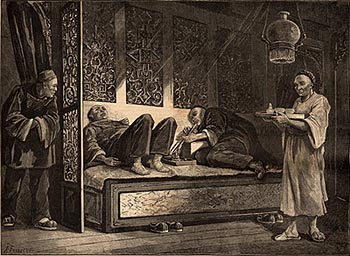

Since they lacked the fundamental rights of citizenship, Chinese immigrants in
the late nineteenth century were not active in local government. Instead, they
grew to depend upon a series of mutual help societies that were generally based
on the member's home districts. These groups generally adhered to Chinese law
and customs and often remained true to their home clans. This local allegiance
limited the way in which immigrants could organize and function within a larger
political framework.
Below is a list of those organizations and the roles they played in everyday life.
|
Chinese Six Communities |
An umbrella organization founded in 1862 in an attempt to coordinate the six independent
Chinatown groups and provide the immigrants with a political voice.
|
|
Fang |
The basic unit in Chinese organizations founded on intimate friendships that pre-dated emigration.
|
|
Hui-kuan |
Translated as "meeting hall," this organization usually run by a democratically elected official
maintained altars to local deities and served as a club and meeting house. |
|
Kong Chow Association |
The first formal Chinese organization in California, it was named after a defunct geographical term
that encompassed six districts and attempted to win allegiance through the area it addressed. |
|
Sze-yap Association |
An area in China with a larger number of immigrants than the Kong Chow, the Sze-Yap Association formed
in 1851 and took members away from the Kong Chow Association. |
|
Tong |
A secret society first founded in 1852 and born of nationalistic and anti-Ch'ing dynasty sentiments.
Completely different from Chinese social societies, these organizations often promoted criminal activity
and violence. |




